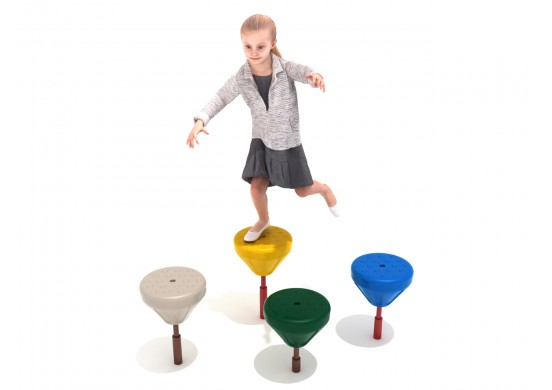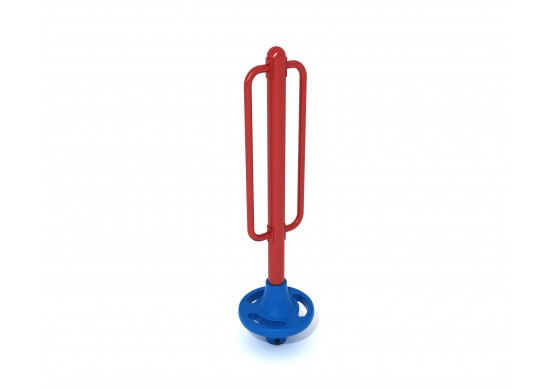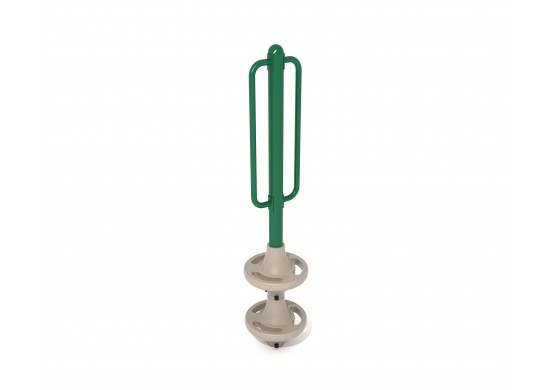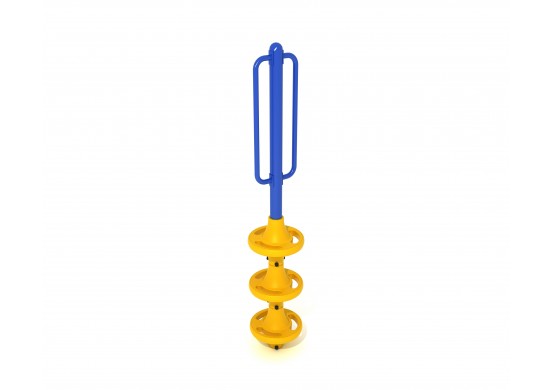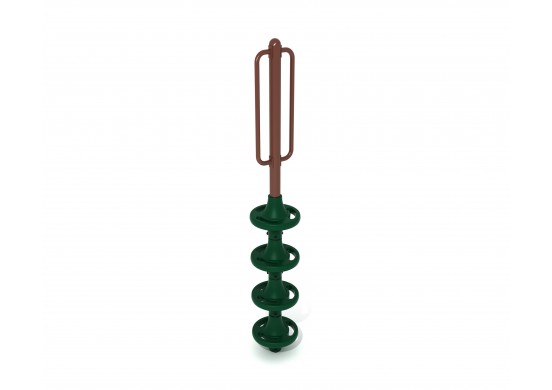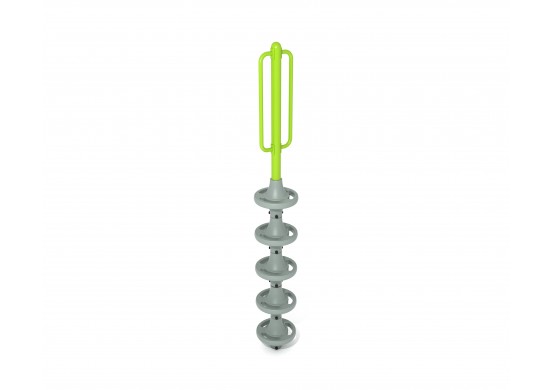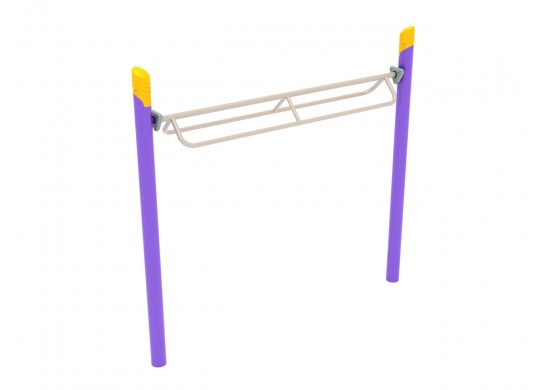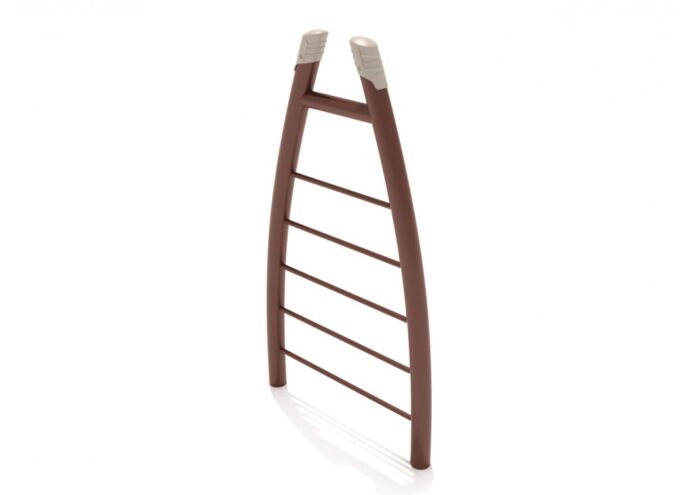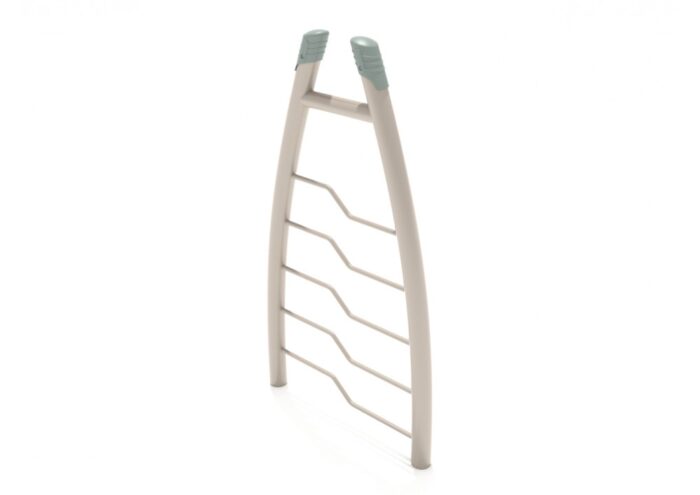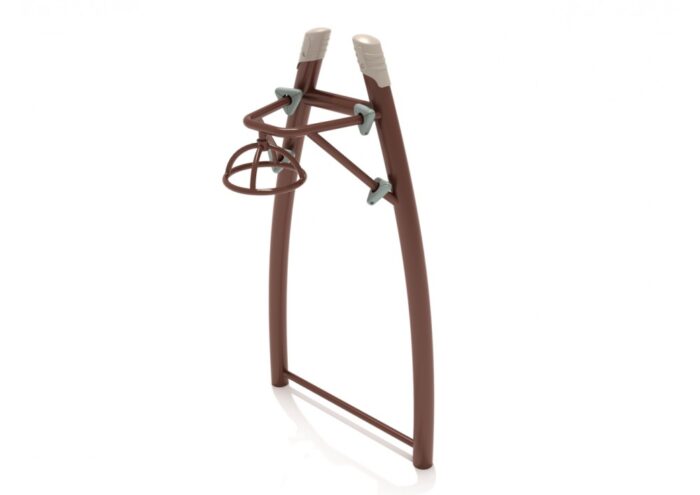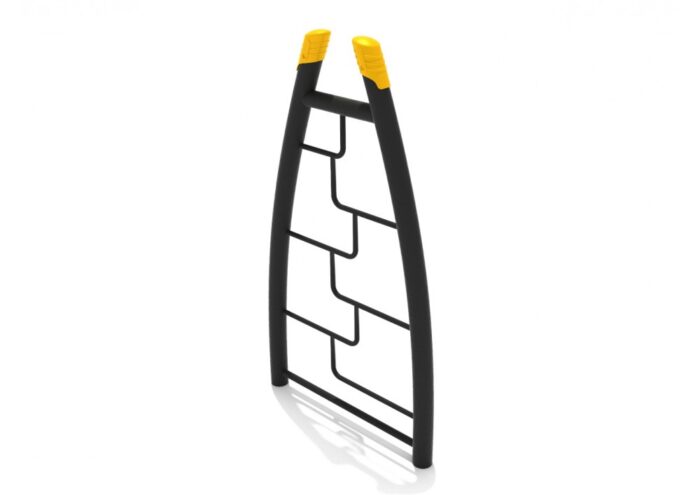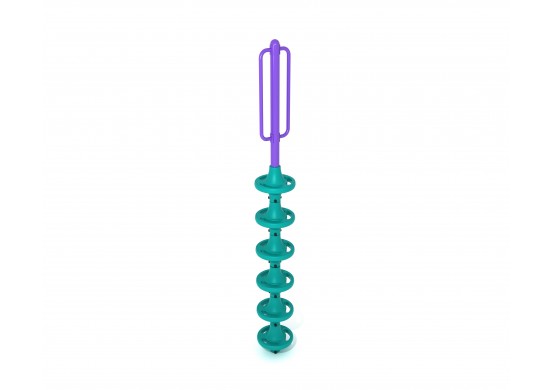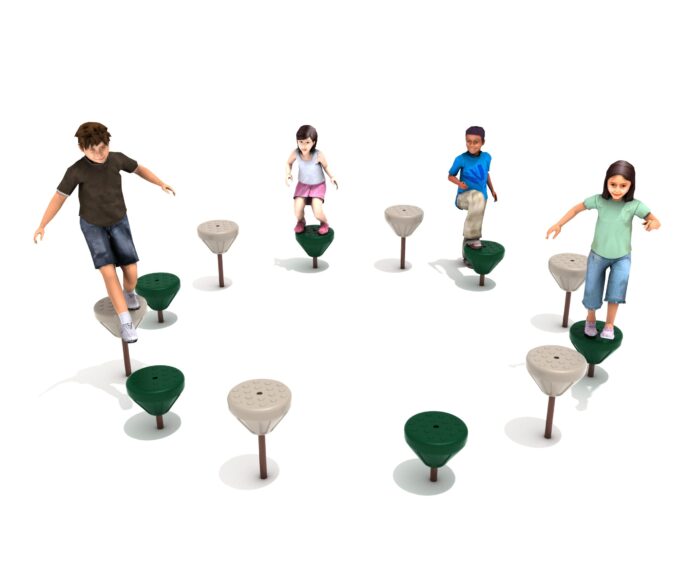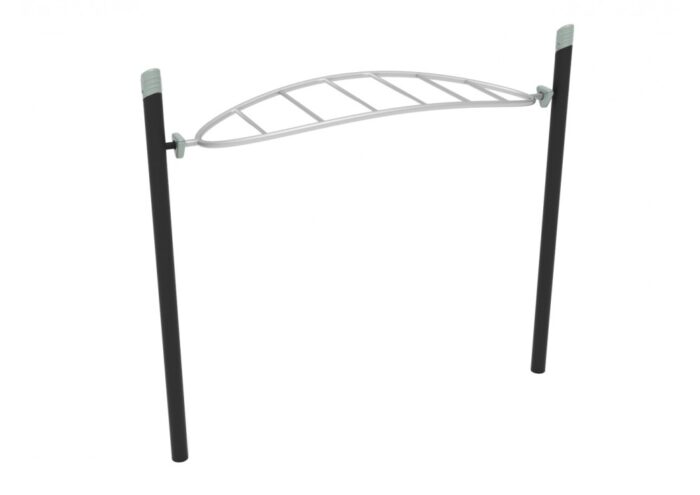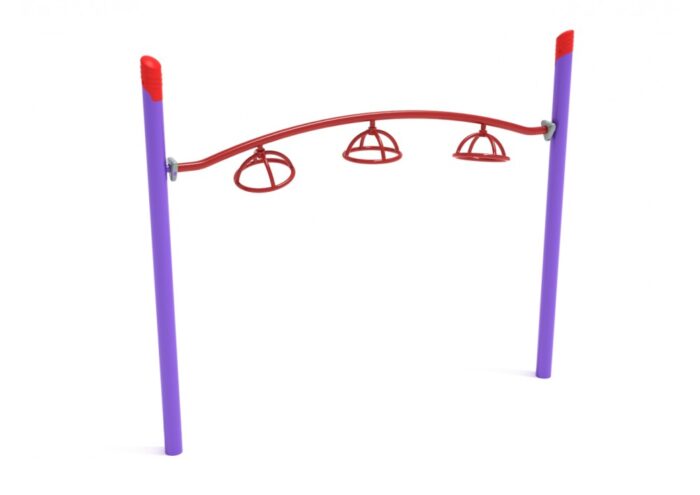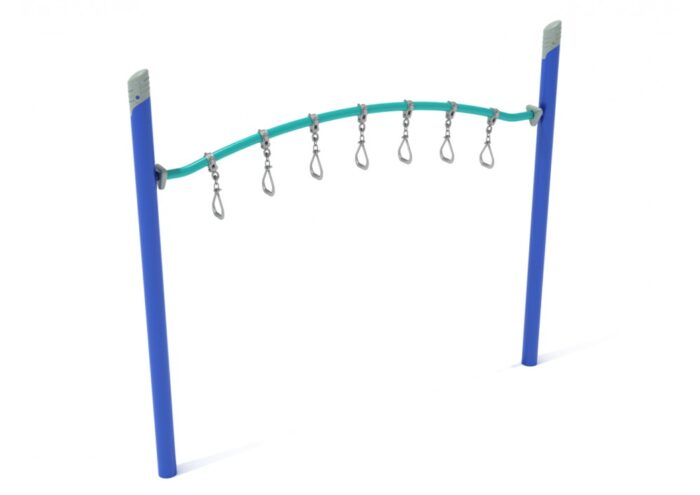Your cart is currently empty!
Climbers
- Balance Beams
- Best Sellers
- Challengers
- Climbers
- Components
- Craggy Rocks
- Crawl Tubes & Bridges
- Free Standing Play
- Merry-Go-Rounds
- Physical Climbers
- Pixel Climbers
- Playgrounds
- Pod Climbers
- Rope Net Climbers
- Spinning
- Traditional Climbers
Showing 1–16 of 108 results
-
Single Pebble
$183.60 -
1 Pod Free Standing Pod Climber
$466.20 -
2 Pods Free Standing Pod Climber
$559.80 -
3 Pods Free Standing Pod Climber
$714.60 -
4 Pods Free Standing Pod Climber
$896.40 -
5 Pods Free Standing Pod Climber
$1,231.20 -
Single Post Overhead Parallel Bar Climber
$1,444.00 -
Curved Post Straight Rung Vertical Ladder
$1,628.30 -
Curved Post Bent Rung Vertical Ladder
$1,628.30 -
Curved Post Overhead Spinner
$1,637.80 -
Curved Post Maze Rung Vertical Ladder
$1,645.40 -
6 Pods Free Standing Pod Climber
$1,639.80 -
Pebble Path
$1,851.30 -
Single Post Overhead Horizon Climber
$1,863.90 -
Single Post 3 Wheel Overhead Spinner
$1,938.00 -
Single Post Curved Overhead Swinging Ring Ladder
$1,947.50
Playground Climbers
Playground climbers, integral to dynamic and engaging outdoor play spaces, serve not only as a source of joy and adventure for children but also play a pivotal role in their physical and cognitive development. In the realm of playground design, these structures have undergone significant evolution, driven by innovations in safety, inclusivity, and environmental integration.
We’ll explore the multifaceted aspects of playground climbers, focusing on the latest design trends that prioritize inclusivity and nature-inspired themes, the selection of materials and construction techniques critical for safety and durability, and the importance of age-appropriate designs that cater to the developmental needs of different age groups. Additionally, we will outline effective maintenance practices essential for ensuring the longevity of these play structures. By examining these key areas, this piece aims to provide a comprehensive overview of how playground climbers can continue to offer safe, stimulating, and inclusive play opportunities for all children.
What are playground climbers?
Playground climbers are dynamic structures designed to stimulate physical activity and adventure among children within playground settings. These pieces of equipment challenge kids to climb, hang, and navigate through various obstacles, thereby promoting strength, coordination, and problem-solving skills. Constructed from materials like galvanized steel, high-density polyethylene (HDPE), and treated wood, these climbers come in diverse forms, ranging from traditional jungle gyms to more innovative, nature-inspired designs. The evolution of playground climbers reflects a growing emphasis on safety, inclusivity, and environmental harmony, ensuring that play spaces cater to the needs of all children while minimizing risks of injury. Through careful design and construction, playground climbers serve as a cornerstone of modern, child-friendly outdoor environments.
Popular Types of Playground Climbers
- Rope Climbers: These consist of nets, ladders, and bridges made from durable ropes, offering a flexible climbing experience that enhances balance and coordination.
- Rock Climbing Walls: Mimicking the challenge of real rock climbing, these walls come with hand and foot holds. They can be freestanding or part of a larger playground structure.
- Dome Climbers: Geodesic domes made from metal bars that children can climb on, over, and through, promoting spatial awareness and agility.
- Vertical Climbers: These can range from simple ladder designs to complex structures with varying angles and obstacles, designed to challenge children’s climbing skills.
- Cargo Nets: Made from heavy-duty rope or webbing, cargo nets offer a vertical or angled climb, encouraging cooperative play and physical strength.
Each type of climber offers unique benefits and challenges, making playgrounds more engaging and beneficial for children’s development.
What are the current trends in playground climber design?
The landscape of playground climber design is witnessing a transformative shift towards inclusive design, nature-inspired structures, and interactive elements. Inclusivity ensures that children of all abilities can enjoy and benefit from playground climbers, breaking down barriers and fostering a sense of community. Nature-inspired designs, on the other hand, aim to blend play structures with the surrounding environment, promoting ecological awareness and appreciation among young users. Furthermore, the incorporation of interactive elements into climbers encourages imaginative play, turning these structures into versatile platforms for creativity and exploration. These trends not only enhance the aesthetic appeal and functionality of playgrounds but also prioritize the safety and developmental needs of children, marking a significant evolution in how play spaces are conceived and constructed.
Examples of Trend Implementation in Playgrounds
- Inclusive Design: The Magical Bridge Playground in Palo Alto, California, is a prime example of inclusivity, featuring zones that cater to various abilities, including a zone with sensory-friendly equipment and wheelchair-accessible structures.
- Nature-Inspired Structures: The Gathering Place in Tulsa, Oklahoma, showcases nature-inspired designs with its playgrounds that mimic the surrounding landscape, featuring rock climbing areas, log scrambles, and play structures that resemble animals found in local habitats.
- Interactive Elements: Blaxland Riverside Park in Sydney, Australia, incorporates interactive elements with its large, web-like climbers and water play areas, encouraging children to engage in imaginative play and explore different textures and elements.
Inclusive Design for Children of All Abilities
Inclusive design in playground climbers ensures that children of all abilities have the opportunity to engage in play. This approach focuses on creating structures that are accessible, offering various levels of challenge to accommodate a wide range of physical capabilities. By incorporating ramps, sensory elements, and adaptable play panels, these designs champion equality and diversity in play spaces.
Nature-Inspired Structures That Blend with Environments
Nature-inspired playground climbers are designed to harmonize with the natural surroundings, often mimicking forms and shapes found in nature. Using materials and colors that blend with the outdoor environment, these structures encourage children to connect with nature, fostering a sense of environmental stewardship. Elements such as tree-shaped climbers, rock-like textures, and woodland-themed play areas are common, creating an immersive outdoor experience.
Interactive Elements That Encourage Imaginative Play
Interactive elements in playground climbers transform these structures into catalysts for imaginative play. Features like movable parts, sound-producing components, and themed play areas inspire children to create their own narratives and adventures. This not only enhances the play experience but also supports cognitive development and social skills, as children collaborate and share their imaginative worlds with peers.
What Constitutes Age-Appropriate Design for Playground Climbers?
Age-appropriate design for playground climbers is pivotal in ensuring that play structures effectively cater to the developmental stages and safety needs of different age groups. For toddlers, designs incorporate low heights and soft materials to minimize injury risks while encouraging exploration. Preschoolers benefit from interactive elements and moderate heights that challenge yet support their growing physical and cognitive abilities. School-aged children, ready for more complex challenges, are engaged with structures that offer higher elevations and more intricate climbing opportunities. This tailored approach not only enhances the play experience for each age group but also promotes a safer play environment, ensuring that children can explore, learn, and grow within appropriate boundaries.
| Age Group | Characteristics | Suitable Climbers | Key Design Features |
| Toddlers (1-3 years) | Developing motor skills, need for safety and simplicity | Low platforms, small steps, gentle slides | Low heights, soft materials, simple structures |
| Preschoolers (3-5 years) | Increasing physical coordination, curiosity, and social interaction | Medium-sized climbers, bridges, tunnels | Moderate heights, interactive elements, vibrant colors |
| School-Aged Children (6-12 years) | Advanced motor skills, desire for challenge and adventure | Tall climbers, complex structures, climbing walls | Higher elevations, challenging obstacles, diverse climbing options |
For Toddlers: Low Heights and Soft Materials
For toddlers, playground climbers are designed with low heights and soft materials to ensure safety while nurturing their curiosity. These features minimize the risk of injury from falls, making it easier for young children to explore and develop their motor skills in a secure environment.
For Preschoolers: Interactive Elements and Moderate Heights
Preschoolers benefit from playground climbers that incorporate interactive elements and moderate heights. This design approach strikes a balance between safety and challenge, fostering physical coordination, cognitive development, and social interaction through play that captivates their imagination and encourages exploration.
For School-Aged Children: Challenging Structures and Heights
School-aged children are ready for playground climbers that present more challenging structures and greater heights. These climbers are designed to stretch their abilities and encourage risk-taking within a safe context, supporting their physical growth and promoting problem-solving and perseverance.
Why is Design and Safety Important for Playground Climbers?
Design and safety are paramount in playground climbers to prevent injuries and ensure compliance with international safety standards. Thoughtful design minimizes fall risks by incorporating features like adequate guardrails and impact-absorbing surfaces, directly influencing the well-being of children. Adherence to safety standards further guarantees that climbers are constructed and maintained to meet rigorous guidelines, protecting children from potential hazards. Ultimately, the integration of innovative design and stringent safety measures creates an environment where children can freely explore and develop their physical and cognitive abilities without undue risk, making playgrounds safer and more enjoyable spaces for all.
Statistics on Playground Injuries
Recent studies highlight the critical need for improved design and safety in playground equipment. According to the Centers for Disease Control and Prevention (CDC), emergency departments in the United States treat more than 200,000 children aged 14 and younger for playground-related injuries each year. Approximately 45% of these injuries are severe—fractures, internal injuries, concussions, dislocations, and amputations. A significant portion of these injuries, particularly falls (which account for over 75% of all playground injuries), could be mitigated with better design and safety features in playground climbers.
To Prevent Injuries by Minimizing Fall Risks
Minimizing fall risks in playground climbers is crucial to prevent injuries, one of the primary objectives of safety-focused design. By integrating features such as adequate guardrails, soft landing surfaces, and appropriate heights, designers can significantly reduce the likelihood of falls and injuries, ensuring a safer play environment for children. Implementing these features can drastically lower the risk of severe injuries that result from falls, making playgrounds a safer place for children to engage in physical activity.
To Comply with International Safety Standards
Compliance with international safety standards is essential for playground climbers to ensure they meet established guidelines for design, construction, and maintenance. Adhering to these standards helps in preventing accidents and injuries, promoting a universally safe play space. It also instills confidence among parents and caregivers about the safety of the play environment. Standards such as those set by the American Society for Testing and Materials (ASTM) and the Consumer Product Safety Commission (CPSC) provide comprehensive guidelines that, when followed, significantly enhance the safety and durability of playground equipment.
By prioritizing design and safety, playground developers can not only create stimulating and inclusive play spaces but also significantly reduce the risk of injuries, ensuring that playgrounds remain a source of joy and adventure for children without compromising their safety.
What Materials are Commonly Used in the Construction of Playground Climbers?
In the construction of playground climbers, materials such as galvanized steel, high-density polyethylene (HDPE), and treated wood are commonly utilized for their durability and safety. Galvanized steel offers robustness and resistance to corrosion, making it ideal for outdoor play structures. HDPE is favored for its safe plastic composition, contributing to the equipment’s longevity and color retention without compromising child safety. Treated wood, on the other hand, brings a natural aesthetic to playgrounds while being treated to resist rot and insect damage. These materials are carefully selected to ensure that playground climbers can withstand the elements and heavy use, all while providing a safe and engaging environment for children to play.
| Material | Pros | Cons | Environmental Impact |
| Galvanized Steel | Durable, resistant to corrosion, long-lasting | Higher initial cost, can get hot in direct sunlight | Recyclable, but energy-intensive to produce |
| High-Density Polyethylene (HDPE) | Safe for children, fade-resistant, low maintenance | Less sturdy than metal, can degrade with extreme temperatures | Recyclable, made from petroleum products |
| Treated Wood | Natural aesthetic, blends with outdoor environments, customizable | Requires periodic maintenance, potential chemical leaching | Renewable resource, treatment chemicals can be harmful |
Galvanized Steel for Durability
Galvanized steel is a top choice for playground climbers due to its exceptional durability and resistance to corrosion. This material ensures that play structures can endure harsh weather conditions and heavy use, making it a long-lasting investment for any playground.
High-Density Polyethylene (HDPE) for Safe Plastics
High-density polyethylene (HDPE) is widely used in playground equipment for its safety and longevity. As a non-toxic plastic, HDPE is safe for children and contributes to the vibrant, fade-resistant colors of climbers, enhancing the visual appeal of play areas.
Treated Wood for Natural Aesthetics
Treated wood brings a natural aesthetic to playground climbers, blending seamlessly with outdoor environments. It undergoes special treatment to resist rot, decay, and insect damage, preserving the beauty and integrity of wooden play structures over time.
How Does Construction Impact the Safety and Durability of Playground Climbers?
The construction of playground climbers significantly influences their safety and durability. Proper joint construction is vital to prevent collapse, ensuring that all parts of the climber are securely connected and can withstand the stresses of daily use. Additionally, surface treatments, such as non-slip coatings and rounded edges, are crucial for reducing the risk of injury. These construction techniques not only extend the lifespan of playground equipment by protecting against wear and environmental damage but also create a safer play environment for children. By prioritizing these construction details, playground climbers can offer reliable performance and safety for years to come.
Addressing Common Construction Flaws
Historically, playground injuries have often been linked to construction flaws such as inadequate joint strength, improper material use, and lack of safety features. For example, climbers constructed without sufficient joint reinforcement have been known to collapse under weight, leading to serious injuries. Similarly, the use of materials prone to splintering or corrosion has resulted in cuts and infections.
Modern designs address these issues through:
- Enhanced Joint Construction: Utilizing welded joints and high-strength fasteners for metal climbers, and interlocking designs for wooden structures, to ensure stability and durability.
- Material Selection: Opting for corrosion-resistant galvanized steel, UV-stabilized HDPE, and pressure-treated, non-toxic wood to prevent deterioration and ensure long-term safety.
- Safety Features: Incorporating soft landing surfaces, such as rubber mulch or poured-in-place rubber, around climbers to cushion falls. Rounded edges and non-slip coatings are also applied to minimize injury risks from slips and sharp corners.
Examples of Improved Construction Techniques
- The Adventure Playground in Berkeley, California, showcases climbers made with robust materials and innovative joint techniques, ensuring structures can withstand heavy use while minimizing injury risks.
- Morgan’s Wonderland in San Antonio, Texas, features playground climbers with advanced safety features, including custom-designed soft surfaces and edges, making it a leading example of inclusive and safe playground design.
Proper Joint Construction Prevents Collapse
Proper joint construction is essential in playground climbers, acting as a critical safeguard against structural failure. By ensuring that all connections are secure and robust, this construction technique significantly reduces the risk of collapse, thereby protecting children from potential accidents and injuries during play.
Surface Treatment Reduces Injury Risk
Surface treatment on playground climbers plays a vital role in minimizing injury risk. Techniques such as applying non-slip coatings and rounding off sharp edges help prevent falls and cuts, creating a safer environment for children to explore and enjoy. These measures are fundamental in maintaining the overall safety and integrity of playground equipment.
By addressing common construction flaws with improved techniques and materials, playground climbers can be made safer and more durable, significantly reducing the risk of injuries and ensuring that playgrounds remain enjoyable and stimulating environments for children.
How Should Playground Climbers Be Maintained for Longevity?
To ensure the longevity of playground climbers, regular maintenance is crucial. This includes regular inspections to check for structural integrity, identifying any potential hazards such as loose bolts or worn parts that could compromise safety. Additionally, repair and replacement of worn or damaged parts is essential to prevent accidents and extend the life of the equipment. Finally, implementing cleaning protocols helps maintain the hygiene and appearance of the climbers, making them more inviting for children and reducing the risk of material degradation over time. By adhering to these maintenance practices, playground climbers can remain safe, functional, and appealing for years to come.
Maintenance Schedule and Checklist
| Task | Frequency | Details |
| Visual Inspection | Daily | Check for visible damage, loose parts, and signs of wear or vandalism. |
| Structural Integrity Check | Monthly | Inspect joints, connections, and anchoring points for stability and security. |
| Surface Treatment Inspection | Quarterly | Examine non-slip coatings and rounded edges for effectiveness and integrity. |
| Cleaning | Weekly | Clean surfaces to remove dirt, debris, and potential contaminants. Use mild soap and water for HDPE and treated wood, and specific cleaners for metal parts to avoid corrosion. |
| Bolt Tightening | Monthly | Ensure all bolts and fasteners are tight and secure to prevent structural failures. |
| Part Replacement | As needed | Replace worn or damaged parts immediately to maintain safety and functionality. |
| Corrosion Check | Bi-annually | Inspect metal components for signs of rust or corrosion, especially in coastal areas or places with harsh weather conditions. |
| Wood Treatment | Annually | For treated wood climbers, check for signs of rot, insect damage, and reapply protective sealants as necessary. |
| Safety Surface Maintenance | Monthly | Ensure the integrity of impact-absorbing surfaces around climbers, replenishing materials as needed. |
| Documentation | Each Inspection | Keep records of all inspections, maintenance activities, and repairs for accountability and future reference. |
Regular Inspections for Structural Integrity
Regular inspections are fundamental to maintaining the structural integrity of playground climbers. These assessments help identify any issues, such as loose connections or corrosion, that could compromise the safety and stability of the equipment. Addressing these concerns promptly ensures that climbers remain a safe environment for children to play.
Repair and Replacement of Worn or Damaged Parts
The repair and replacement of worn or damaged parts is crucial in extending the lifespan of playground climbers. This process involves fixing or substituting components that have deteriorated over time, preventing potential hazards and keeping the equipment in optimal condition for safe play.
Cleaning Protocols to Maintain Hygiene and Appearance
Implementing cleaning protocols plays a significant role in maintaining the hygiene and appearance of playground climbers. Regular cleaning not only helps in preventing the spread of germs but also contributes to the overall appeal of the play area, encouraging its use and enjoyment by children.
What are the Key Considerations in Ensuring the Longevity of Playground Climbers?
Ensuring the longevity of playground climbers involves several key considerations. The choice of weather-resistant materials is crucial, as it directly impacts the equipment’s ability to withstand various environmental conditions without deteriorating. The quality of construction also plays a significant role, with well-constructed climbers being more durable and less likely to require frequent repairs. Finally, preventative maintenance is essential for addressing wear and tear before it leads to significant damage. By focusing on these considerations, playground operators can provide safe, durable, and enjoyable climbers that stand the test of time.
Choice of Weather-Resistant Materials
Selecting weather-resistant materials is vital for the durability of playground climbers. Materials that can endure rain, sun, and temperature fluctuations without corroding, fading, or weakening ensure that playground equipment remains safe and appealing over time. This choice significantly impacts the climber’s ability to withstand the elements and maintain its structural integrity.
Quality of Construction to Withstand Heavy Use
The quality of construction is essential for playground climbers to withstand heavy use. High-quality construction techniques, such as secure welds for metal parts and robust fastening systems for wooden elements, ensure that climbers can endure the daily wear and tear of active play without compromising safety or longevity.
Preventative Maintenance to Address Wear and Tear
Preventative maintenance is crucial in addressing wear and tear before it escalates into major damage. Regular inspections, timely repairs, and consistent upkeep of playground climbers help in identifying and mitigating potential issues early on. This proactive approach extends the lifespan of the equipment and ensures a continuous, safe play experience for children.

